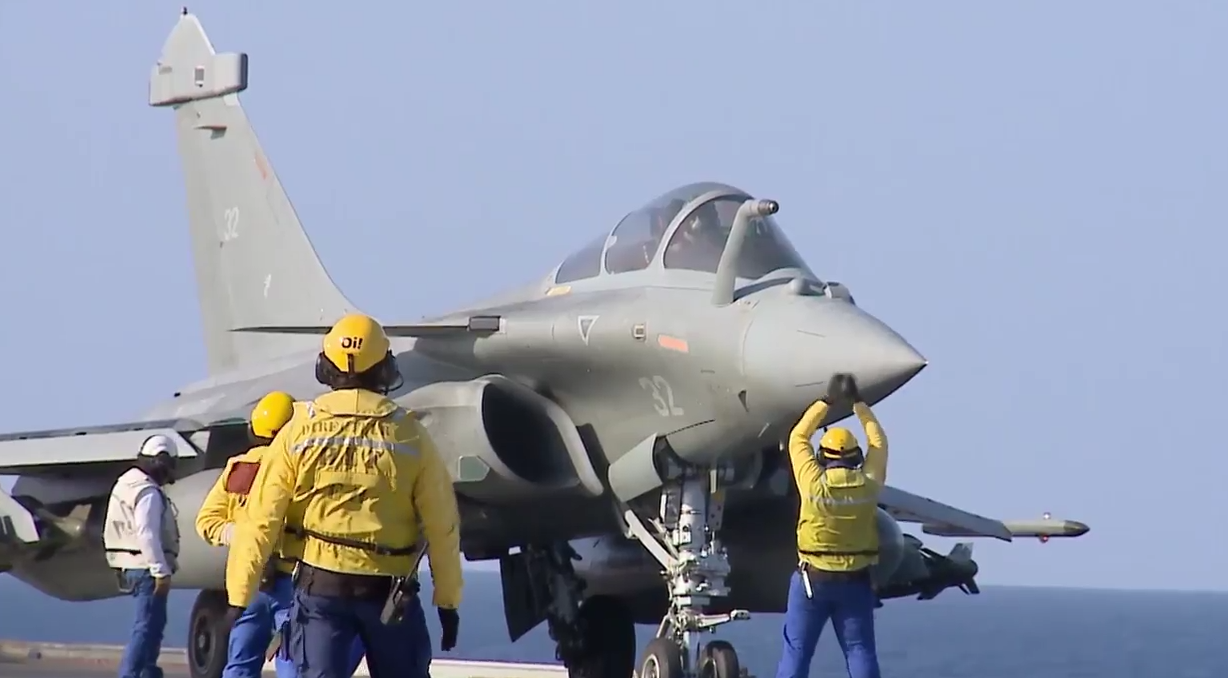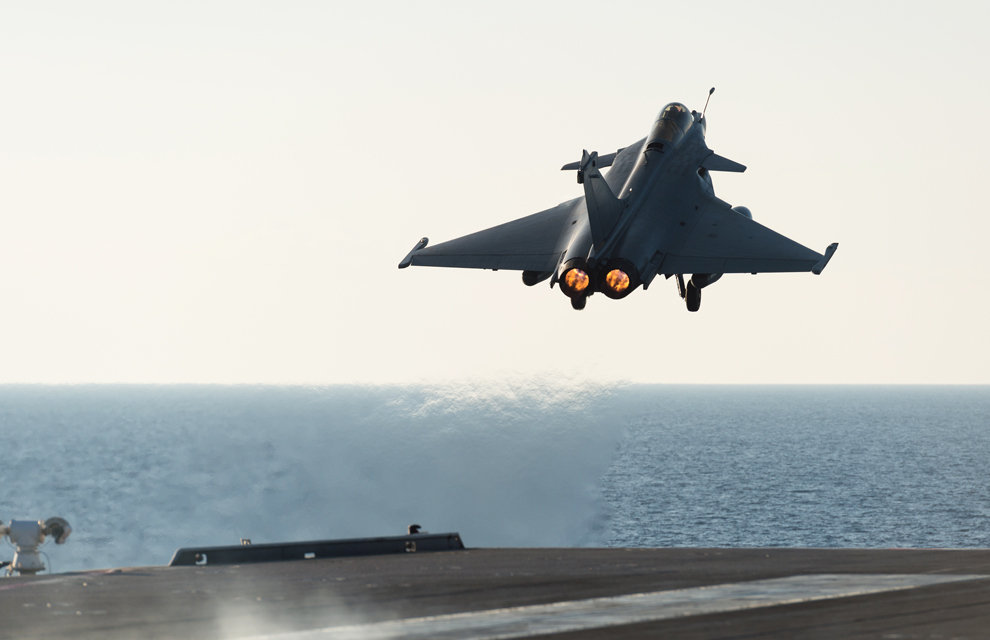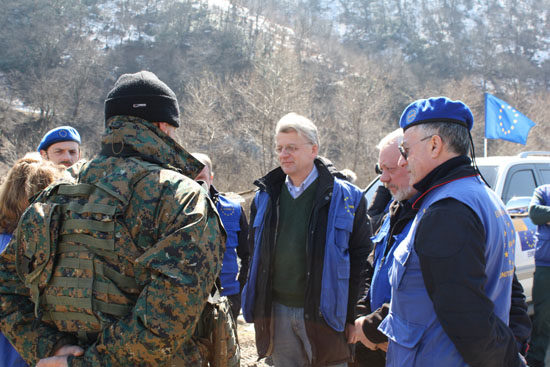The Rafales Marines of the Charles-de-Gaulle take off. Belgians ensure solidarity

(B2) The Rafale planes on board the Charles de Gaulle made their first exit to carry out strikes on Monday (November 23). " The Carrier Strike Group (GAN) formed around the French aircraft carrier Charles de Gaulle, deployed in the eastern Mediterranean, conducted its first missions over areas controlled by Daesh in Iraq., announces the general staff today.
Two strikes on Iraq
Around 8 a.m. this morning (French time), two Rafale Marine patrols were catapulted from the GAN. Each made up of two hunters. Destination: Iraq. In Ramadi, the strikes " knocked out a group of terrorists ” underlines the statement of the staff of the armies. " An ISIS artillery position that was firing on Iraqi troops was destroyed in Mosul ". In total, the operation lasted almost 7 hours. Air missions, conducted in coordination with the Coalition Air Operations Center (CAOC) located in Al Udeïd in Qatar, and in close collaboration with other nations. The four French hunters having, in particular, " were resupplied by coalition planes ».
The Belgian frigate in a defensive position...
For the Belgian frigate which accompanies the French aircraft carrier, this transition to a more offensive action does not pose a problem. The Council of Ministers (Belgian) of October 30 had approved the integration of the frigate Léopold Ier within the French carrier group. He confirmed on Wednesday (November 18) the reorientation of the mission. " We consider it as a response to the French government's request for assistance. We will participate in the defensive mission of Charles de Gaulle” justified the Minister of Defense, Steven Vandeput in front of the parliamentarians. " The mission of Leopold I will be to detect and identify threats approaching the aircraft carrier. If a threat is proven, the building can use force, according to its rules of engagement which are confidential. »
...for offensive action
In fact, this position is strictly correct from an operational technical point of view. It is the Charles-de-Gaulle and France which lead the offensive action, the Belgian ship being there only to ensure its protection. From a point of view of internal politics, however, we are closer to a maneuver of contortion (which a Jesuit would in no way deny) making it possible to escape any reproach of engagement in an armed action. As specified by the French general staff, it is the Naval Action Group which is carrying out the strikes. On the European level, Belgian honor is on the other hand safe. Because Belgium thus becomes the first country to have engaged alongside the French in the air war waged in Syria against Daesh and to have applied and even claimed the application of the solidarity clause.
A long-planned operation...
Which was not quite planned at the start. The Minister of Defense tells it, the engagement with the Charles de Gaulle was planned for a long time. It is " at the end of July (that) France requested our collaboration he says (1). This new positioning does not present a problem for Steven Vandeput. On the contrary. " It was an interesting prospect for the navy because we were finally going to be able to mobilize a frigate again. The initial mission was to escort the Charles de Gaulle which, at the request of the United States, was supposed to guarantee a presence in the Gulf region. This mission then seemed to be more of a training than an operation. »
... which changed a bit along the way
The French government “informed us (Tuesday 17 November) which contrary to what had been initially planned, the aircraft carrier was no longer heading for the Persian Gulf. (and that it was) possible that operations were actually carried out in Syria from the Charles de Gaulle. I immediately informed the Council of Ministers of these modifications and yesterday evening, the restricted Council of Ministers gave the green light to the continuation of the operation. » In fact, well before the attacks, when the Leopold I was to join the "Charles", the Belgian defense had foreseen the hypothesis of a more offensive attitude from France, specifying that we "would advise at that time" .
(Nicolas Gros-Verheyde)
(1) In fact, the contacts had already been initiated for a longer time. At the beginning of July, we met a senior Belgian defense official who was already talking about this possibility.



